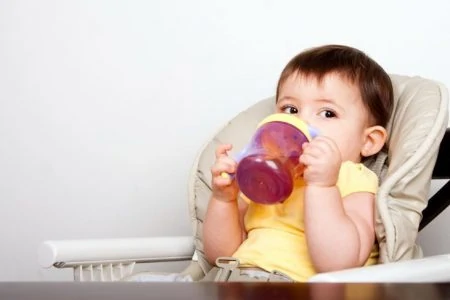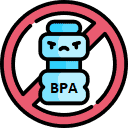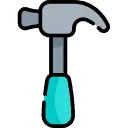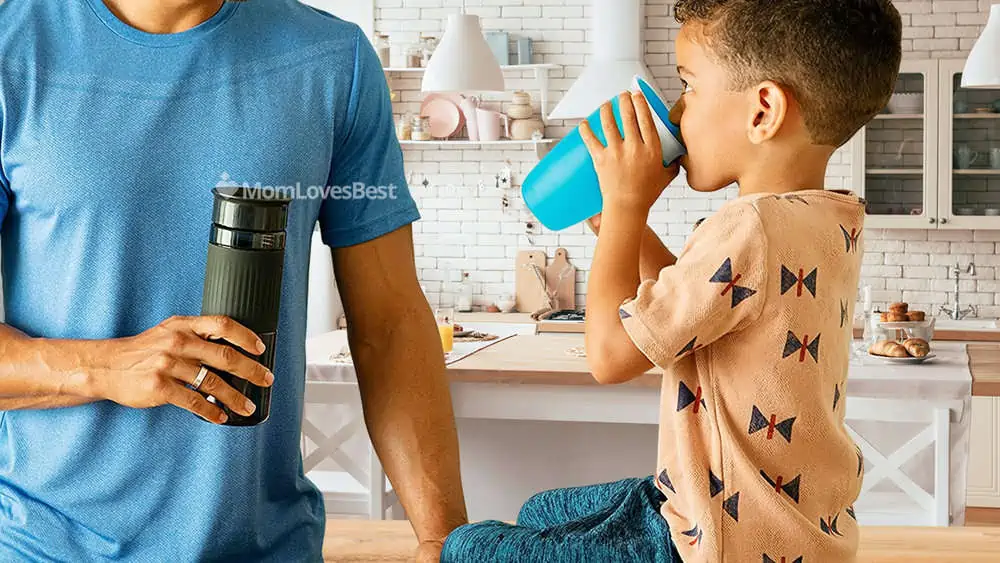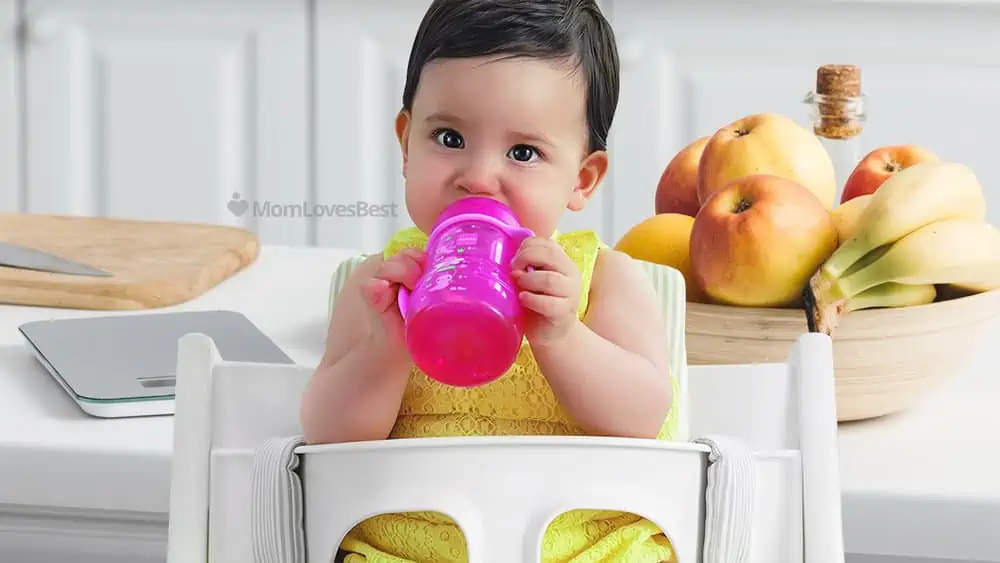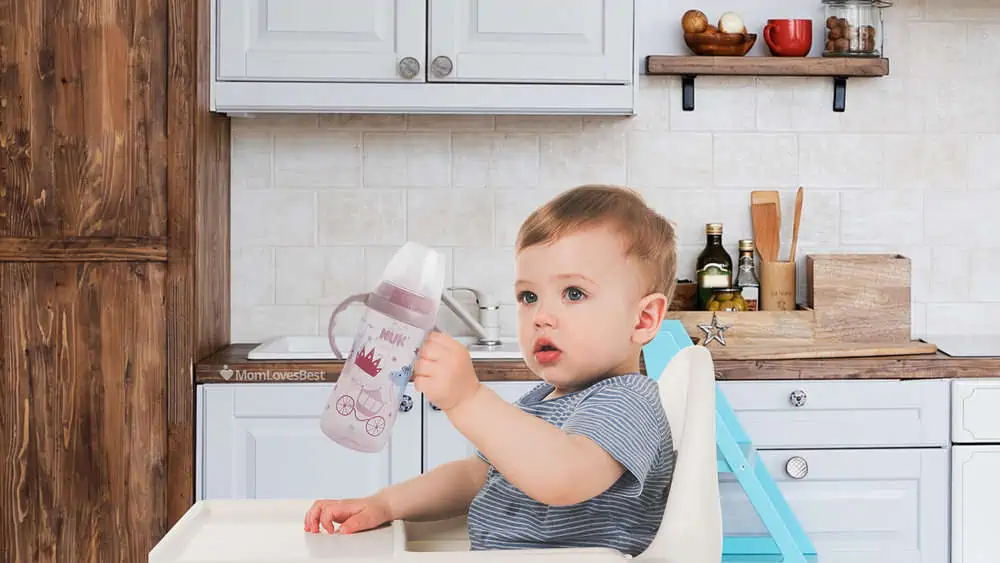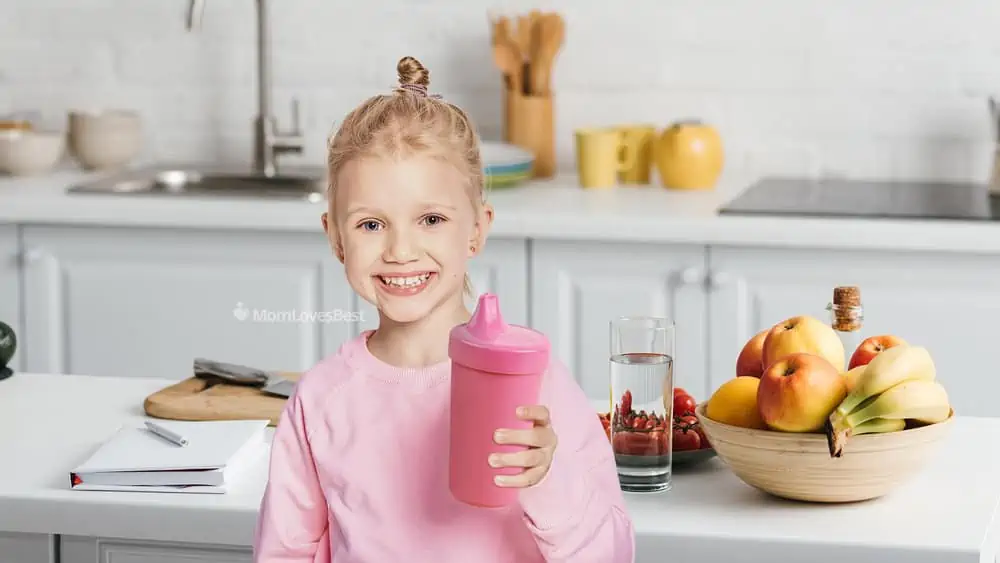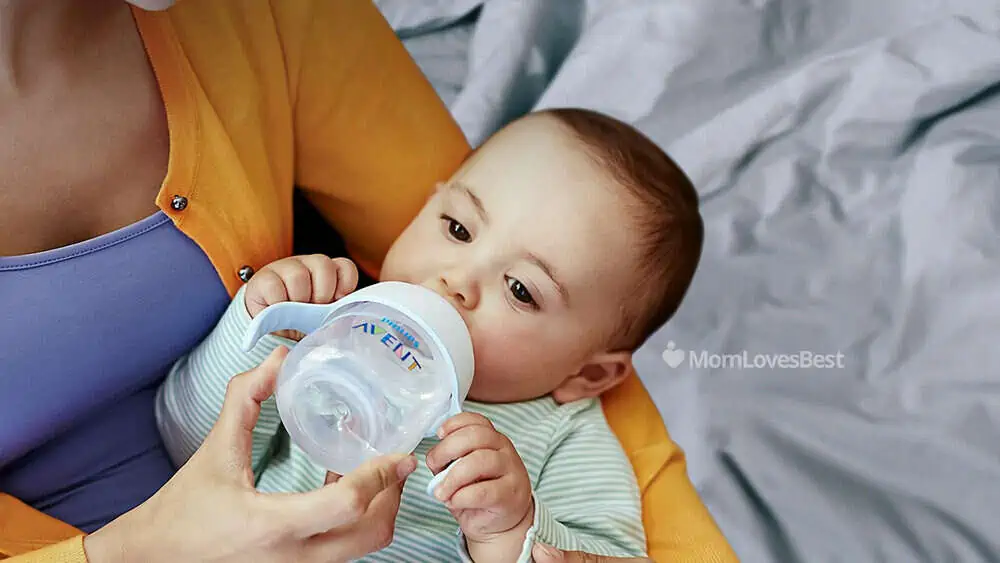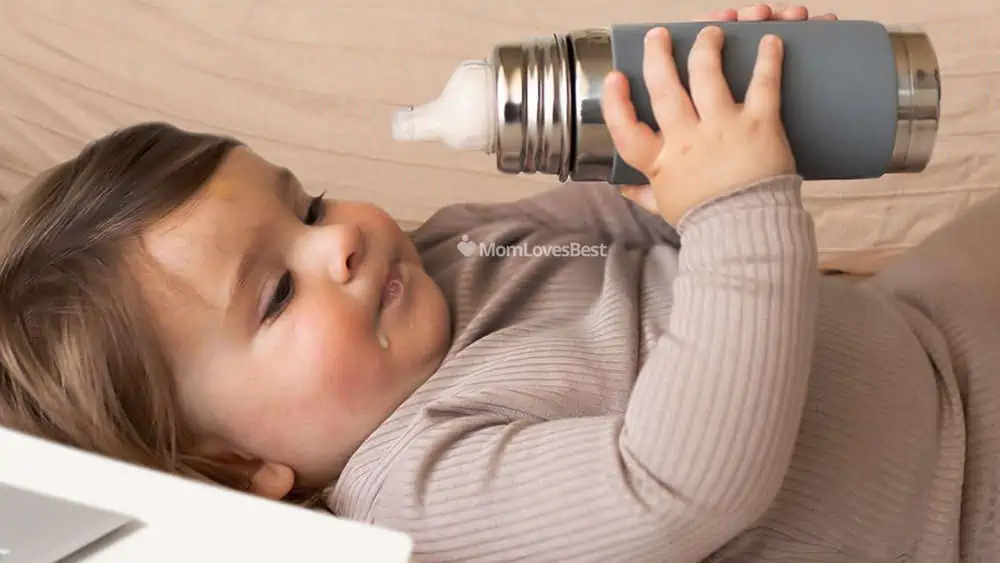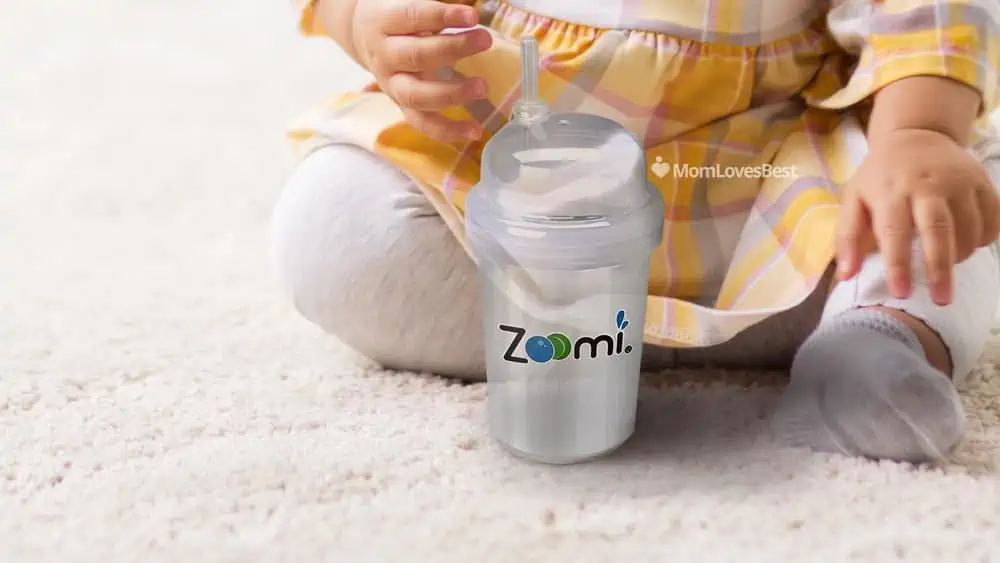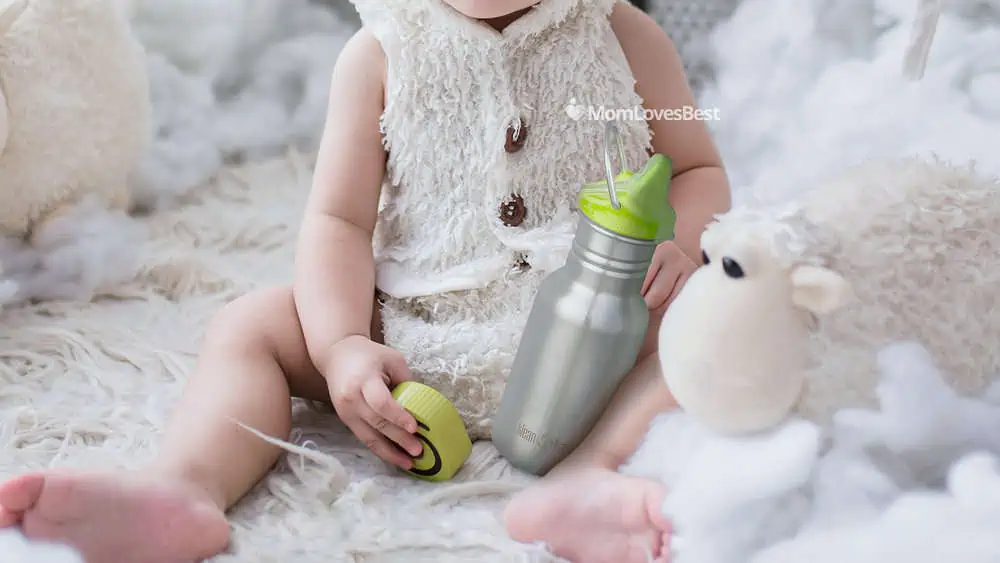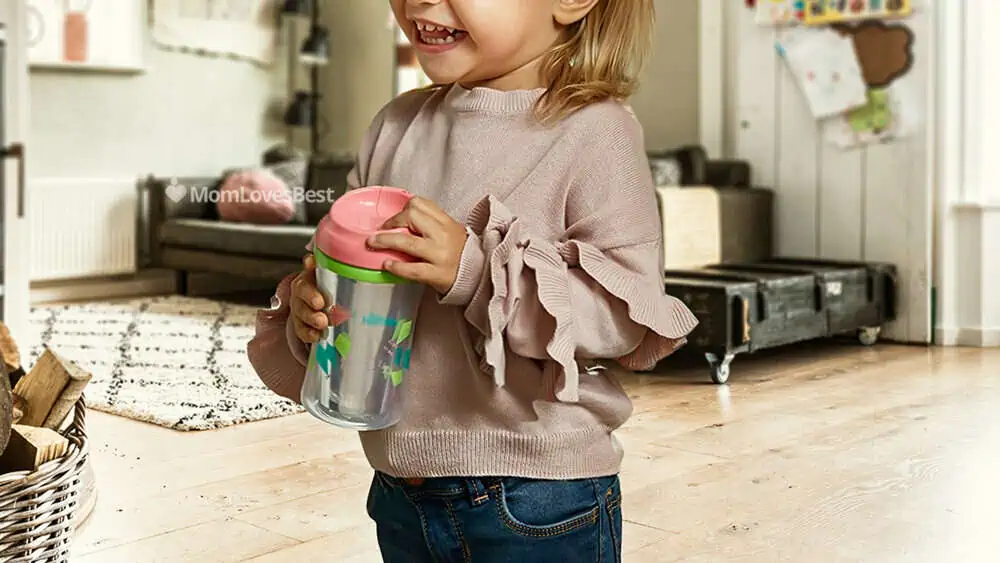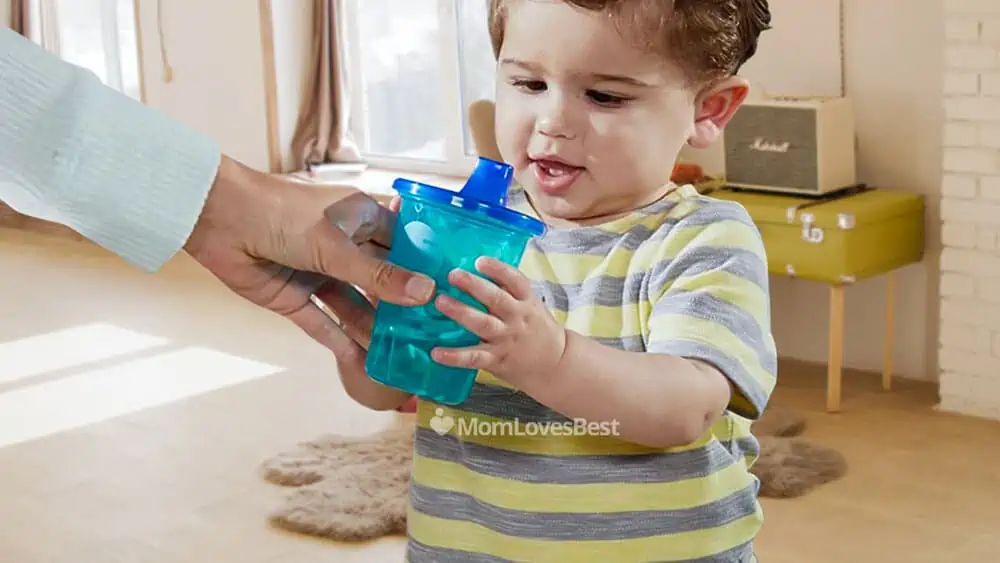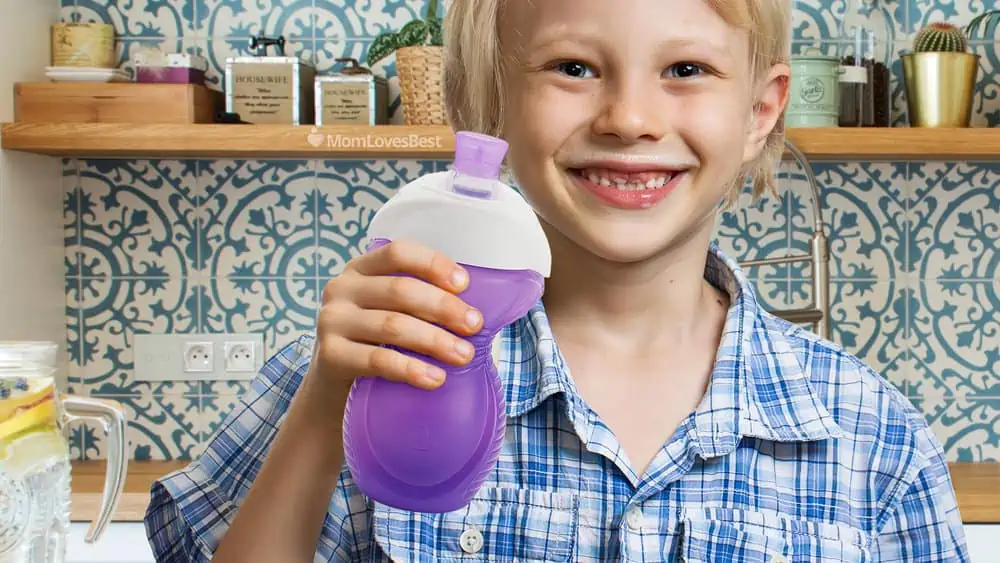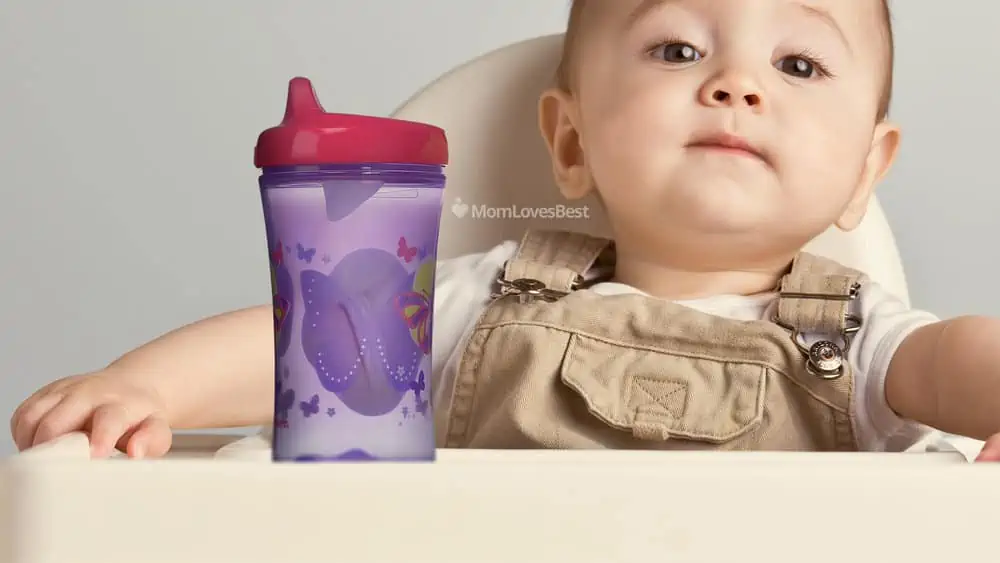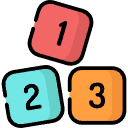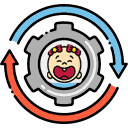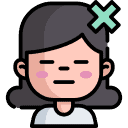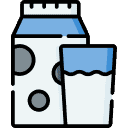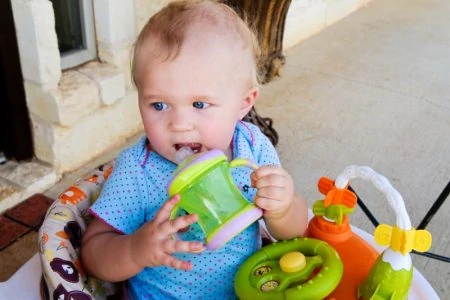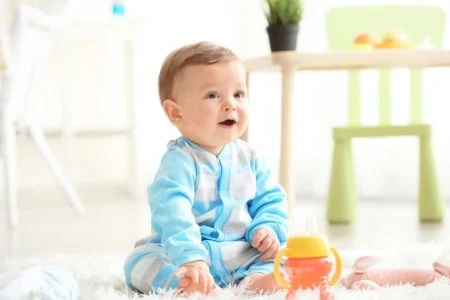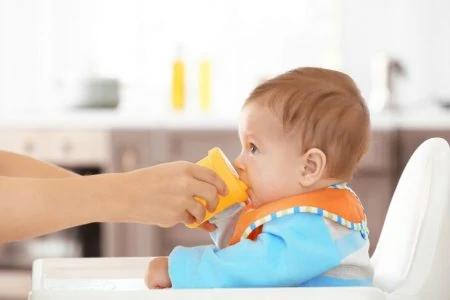Finding the best sippy cup for your child can feel like a mission impossible. With aisles full of different spouts, valves, and handles, it is enough to make any parent dizzy.
We skipped the guesswork and researched the top-rated options across every style and brand. We created this guide to help you cut through the noise and find the perfect cup to help your little one transition from the bottle.
- Looks like a standard cup
- Long-lasting
- Spoutless design
- Lid keeps spout clean
- Ergonomic design
- Durable BPA & BPS free plastic
- Gender-neutral cup
- Free from harmful chemicals
- Gentle on baby’s mouth
- Different colors to choose from
- Holds 12 ounces
- Food-grade stainless steel
When to Start Using a Sippy Cup
Sippy cups serve as a bridge between the breast or bottle and a regular open cup. Toddlers lack the motor skills and balance to carry an open cup without turning your living room into a splash zone. These cups minimize the mess while your child learns.
Most pediatricians recommend weaning your child off bottles by their first birthday. This timeline helps protect developing teeth (1). Waiting too long can create a strong emotional attachment to the bottle, making the weaning struggle much harder later on.
If the one-year mark passes and the bottle is still in rotation, aim to have them fully weaned by 18 months.
You can start practicing early. Some babies are ready to try a sippy cup around six months. If they aren’t interested yet, try again around nine months. This gives them plenty of time to master the skill before their first birthday party.
Understanding Sippy Cup Designs
While the goal is the same, the mechanics vary between cups. Here are the common components you will encounter.
- Spout: This functions like a bottle nipple but with a different shape. It is usually part of the lid and is where the child drinks.
- Lid: The screw-on or snap-on top that seals the liquid inside.
- Valve: This small piece controls the flow. It stops the liquid from spilling when the child isn’t actively sucking. Some are removable for cleaning; others are built-in.
- Cup: The main reservoir that holds the water, milk, or juice.
- Handles: These help smaller babies grip the cup. Some are integrated into the lid, while others are removable accessories.
Silicone Spout Cups
These feature wide spouts made from soft silicone, similar to a bottle nipple. The flexible material feels familiar to babies, making them an excellent choice for the initial transition.
Pros
- Ideal for bottle-fed babies.
- Familiar texture helps reluctant babies transition.
Cons
- Less durable against sharp toddler teeth.
- Not ideal for older toddlers.
Soft Spout Cups
These cups use a softer plastic for the spout. It is not as pliable as silicone but still has some give. It offers a middle ground between a nipple and a hard plastic tip.
Pros
- Great introductory cup.
- Gentler on gums than hard plastic.
- Good for younger babies.
Cons
- Babies often chew on the spout.
- Not robust enough for preschoolers.
Hard Spout Cups
These resemble soft spout cups in shape but use rigid plastic. They are bite-proof and designed for children who have mastered the basics of holding a cup.
Pros
- Perfect for teething toddlers who bite.
- Highly durable.
Cons
- Not suitable for young infants.
- Can be tough on gums if the child falls.
Spoutless Cups
Also known as 360-degree cups, these allow kids to drink from anywhere around the rim. They seal automatically when the child stops drinking. They mimic the muscle movement used for regular cups.
Pros
- Best for oral development.
- Eliminates risk of teeth malformation.
Cons
- Steeper learning curve for young babies.
Straw Cups
These feature a straw, usually made of silicone, with a valve to prevent leaks. Many speech pathologists prefer straw cups because they promote oral motor skills different from suckling.
Pros
- Great alternative for babies who refuse spouts.
- Promotes healthy tongue positioning.
Cons
- Harder to clean (requires a straw brush).
- Kids must learn to keep the cup upright, not tipped.
How We Chose the Best Cups
Selecting a sippy cup seems simple until you are standing in the aisle staring at fifty options. I learned this lesson the hard way. I grabbed a cheap pack without thinking, and my daughter chewed through the spouts in a week.
I had to replace them immediately. I asked a friend for advice, and she recommended a more durable brand. Although they cost a little more upfront, they lasted until my daughter was ready to transition to open cups.
Here are the key features to evaluate before you buy:
Product Reviews
We tested the top contenders to bring you 15 of the best options for every stage.
Munchkin Miracle 360 Sippy Cup
Best Sippy Cup for Toddlers
The Munchkin Miracle 360 changes the game by ditching the spout entirely. It features a 360-degree drinking edge that seals automatically when your child stops sipping. Your toddler can pick it up and drink from any side, just like a regular cup, but without the spills.
Dentists often recommend this style because it supports normal muscle development in the mouth. It eliminates the potential “nipple confusion” or tongue thrusting issues associated with traditional spouts.
Cleaning is straightforward since there are no hidden straws or tiny crevices. However, you must disassemble all four pieces (lid, collar, valve, cup) to prevent mold buildup under the silicone ring. This cup is ideal for toddlers over 12 months who are ready to graduate from bottles but aren’t quite ready for open cups.
Pros
- Spill-proof even when upside down.
- Spoutless design is better for dental health.
- Easy to reassemble.
Cons
- Price point is higher than basic cups.
- Opaque lid makes it hard to see liquid levels.
Our Ratings
MAM Trainer Cup with Handles
Best Sippy Cup for a Breastfed Baby
The MAM Trainer Cup is designed specifically to bridge the gap between breastfeeding and cup drinking. It includes a soft, spill-proof nipple that feels familiar to breastfed babies, reducing rejection.
Once your baby is comfortable, you can switch to the included soft spout. The wide handles are non-slip and positioned perfectly for small hands to grab. The wide opening makes filling and cleaning a breeze.
This cup excels at preventing messes. The cap doubles as a measuring cup and keeps the spout clean in your diaper bag. It does require a strong suck to activate the flow, which is great for leak prevention but might frustrate some babies initially.
Pros
- Includes both a nipple and a spout.
- Protective cap keeps the mouthpiece clean.
- Handles are easy for infants to hold.
Cons
- Soft spout is vulnerable to chewing.
- Strong suction required to get liquid out.
Our Ratings
NUK Learner Sippy Cup
Best Sippy Cup for Gassy Baby
Swallowing air while drinking leads to gas and colic, a problem usually associated with bottles but one that can persist with sippy cups. The NUK Learner addresses this with a dedicated air vent built into the spout.
This vent ensures your child swallows liquid rather than air bubbles. The spout itself is 100% silicone and offset from the center, which helps the transition from bottle feeding. The silicone is soft against sensitive gums, making it a soothing choice during teething.
The handles are removable, allowing the cup to grow with your child. If your baby has a sensitive stomach, this cup is a smart choice to keep them comfortable while they learn new skills.
Pros
- Air vent reduces gas intake.
- Offset silicone spout mimics natural feeding.
- Handles are removable and easy to grip.
- Gentle on soft gums.
Cons
- Toddlers may become too attached to the bottle-like shape.
Our Ratings
MAM Starter Cup with Handles
Best Spill-Free Sippy Cup
The MAM Starter Cup holds five ounces, making it the perfect size for beginners. It features an extra-soft spout that is entirely spill-free. The ergonomic shape is curved to fit comfortably in tiny hands.
This cup helps your little one transition from sucking to drinking without the mess. A dust cap keeps the spout sanitary during transport. The plastic is BPA and BPS-free, so it is safe for daily use.
We love this for on-the-go parents. You can toss it in your bag without worrying about finding a soaked wallet later.
Pros
- Excellent anti-spill protection.
- Ergonomic shape builds confidence.
- Lightweight for small babies.
Cons
- Soft spout can be damaged by sharp teeth.
Our Ratings
Re-Play Sippy Cups
Best Sippy Cup for Milk
Re-Play cups are fantastic for milk because they are easy to clean and extremely durable. They hold 10 ounces and feature a hard spout, making them suitable for babies nine months and older.
The silicone valve is a single piece that pops in and out. When installed properly, it prevents leaks. As your child grows, you can remove the valve to create a free-flow cup.
These cups are made from recycled milk jugs, which is a cool eco-friendly bonus. They are free of BPA, PVC, and melamine. The textured plastic is rugged and can survive being thrown from a high chair repeatedly.
Pros
- Reliable leak-free valve.
- Made from recycled materials.
- Cupholder friendly shape.
Cons
- Does not include a travel lid.
Our Ratings
Philips Avent My Natural Trainer Cup
Best Transition Sippy Cup
The Philips Avent My Natural Trainer is a versatile system for babies four months and up. It uses a soft silicone spout that mimics a bottle, easing the switch for resistant babies.
The real selling point is compatibility. You can mix and match parts with other Philips Avent bottles and cups. If your baby prefers a specific nipple or handle set, you can probably attach it here.
It comes with a hygiene cap and rubberized trainer handles that are soft to the touch. The parts are dishwasher safe, although there are a few components to keep track of.
Pros
- Affordable price point.
- Soft, rubberized handles provide excellent grip.
- Mix-and-match compatibility with the Avent line.
Cons
- Too wide for many car cup holders.
- Lid can be unscrewed by clever toddlers.
Our Ratings
Pura Kiki Stainless Steel Insulated Sippy Cup
Best Stainless Steel Sippy Cup
The Pura Kiki is 100% plastic-free. The bottle is food-grade stainless steel, and the spout is medical-grade silicone. You can swap the top for a nipple, straw, or sports cap as your child gets older.
It holds nine ounces and is insulated to keep milk or water cold. The bright silicone sleeve adds a pop of color and provides grip for small hands.
While it is an investment upfront, the durability and adaptability make it cheaper in the long run. You won’t be throwing this away after a few months.
Pros
- Zero plastic components.
- Modular system adapts from infant to big kid.
- Silicone sleeve protects the bottle and improves grip.
Cons
- Expensive initial purchase.
- Heavy; can hurt if dropped on a toe or thrown.
Our Ratings
NuSpin Kids Zoomi Straw Sippy Cup
Best Straw Sippy Cup
The NuSpin Kids Zoomi cup simplifies the straw cup experience. It uses a valve-free straw design that is easy to sip from but still minimizes spills. It is made without BPA, PVC, or latex.
This cup consists of just three pieces: base, lid, and straw. This makes it incredibly easy to clean and reassemble compared to other straw cups with complex valves.
The straw is soft silicone, so it won’t injure the roof of the mouth if your child falls while drinking. It also features a “lock” so the straw cannot be pulled out by curious toddlers.
Pros
- Simple three-piece design.
- Durable silicone straw resists pulling.
- Soft materials prevent mouth injuries.
Cons
- Pricey for a single cup.
- No travel cap included.
Our Ratings
Klean Kanteen Sippy Cup
Best Toddler Cup
The Klean Kanteen is built like a tank. Made from food-grade stainless steel, it won’t retain flavors or odors. Your child’s water will taste like water, not like yesterday’s juice.
The included sippy cap has a removable valve for easy cleaning. The loop handle on the cap makes it easy to hook onto a stroller or backpack.
It fits in most standard cup holders, making it great for road trips. While heavier than plastic, it is balanced well for toddler hands.
Pros
- Durable stainless steel construction.
- Does not retain flavors or odors.
- Loop handle is great for carrying.
Cons
- Paint may chip over time (hand wash to prevent this).
- Higher price point.
Our Ratings
Green Sprouts Glass Sip and Straw Cup
Best Glass Sippy Cup
Glass is the cleanest material for drinking, but it is fragile. Green Sprouts solves this by encasing the glass reservoir in a shock-absorbing plastic shell. Your baby drinks from glass, but if they drop it, the shell protects it.
This kit comes with both a silicone sippy spout and a straw, giving you two cups in one. The liquid only touches glass and silicone, ensuring no plastic leaching.
It is dishwasher safe and suitable for babies as young as four months. The handles help with grip but are removable if your child prefers to hold the cup body.
Pros
- Includes both spout and straw attachments.
- Liquid never touches plastic.
- Protective shell prevents breakage.
Cons
- Glass can still break under extreme force.
- Small capacity (4 oz).
Our Ratings
NUK Silicone Spout Active Cup
Best Silicone Sippy Cup
The NUK Active Cup features a soft silicone spout that is gentle on gums and teeth. It is an excellent weaning tool because the spout texture is nearly identical to a bottle nipple.
It is lightweight and holds 10 ounces, meaning you won’t need to refill it constantly. It comes with a clip to attach to a diaper bag, which is a surprisingly useful feature for keeping it off the dirty ground.
It is leakproof, but your child will need to suck fairly hard to get the liquid flowing.
Pros
- Budget-friendly.
- Convenient carry clip.
- Soft spout is comfortable for teething babies.
Cons
- Silicone spout is not bite-proof.
- High suction required to drink.
Our Ratings
Gerber Advance Developmental Insulated Cup
Best Orthodontic Sippy Cup
This cup features a flat, bite-resistant rim designed to prepare your child for open cups. It requires a different mouth shape than a traditional spout, which can be beneficial for oral motor skills.
It is insulated to keep drinks cool for up to six hours, making it great for summer outings. The valve ensures it is leakproof, even when dropped from a high chair.
These come in a two-pack and are BPA-free. The unique rim is tough enough to withstand aggressive chewers.
Pros
- Flat rim design eases transition to open cups.
- Insulation keeps drinks fresh.
- Very durable construction.
Cons
- Lids can crack if overtightened.
- Condensation can form between insulation layers.
Our Ratings
The First Years Spill-proof Sippy Cup
Best Budget Sippy Cup
These cups are simple, effective, and cheap. They are durable enough to wash and reuse for months, but inexpensive enough to recycle if they get too gross.
The snap-on lids are interchangeable and feature a simple one-piece valve system built into the lid itself (no small parts to lose). They are translucent, so you always know how much drink is left.
They are free of PVC, BPA, and phthalates. You can also use the base as a regular open cup once your child is ready.
Pros
- No small valves to lose or clean.
- Stackable for easy storage.
- Extremely affordable.
Cons
- Lids can pop off if dropped hard.
- Plastic degrades faster than other brands.
Our Ratings
Munchkin Click Lock Sippy Cup
Best Insulated Sippy Cup
This cup is for the active toddler. It holds nine ounces and features insulation to keep water cold during long park visits. The spout is a hard, bite-proof style that stands up to chewing.
The Click Lock system guarantees the lid is on correctly. If it clicks, it won’t leak. The one-piece valve is easy to remove and clean.
It fits in most cup holders and is top-rack dishwasher safe. The hourglass shape is easy for small hands to grip.
Pros
- Audible click confirms leakproof seal.
- Bite-proof spout.
- Good insulation.
Cons
- Replacement spouts are hard to find.
- Valve requires strong suction.
Our Ratings
Gerber Hard Spout Sippy Cup
Best Hard Spout Sippy Cup
This cup features an ultra-durable hard spout that is practically indestructible. If your child chews through soft spouts in days, this is the replacement you need.
It holds 10 ounces and is BPA-free. The valve removes easily for cleaning, and the cup is dishwasher safe.
The graphics are printed to last and won’t fade after a few washes. It is a reliable, sturdy choice for kids 12 months and older.
Pros
- Extremely durable hard spout.
- Simple to clean.
- Cost-effective.
Cons
- Valve can trap mold if not cleaned well.
- Not suitable for younger babies.
